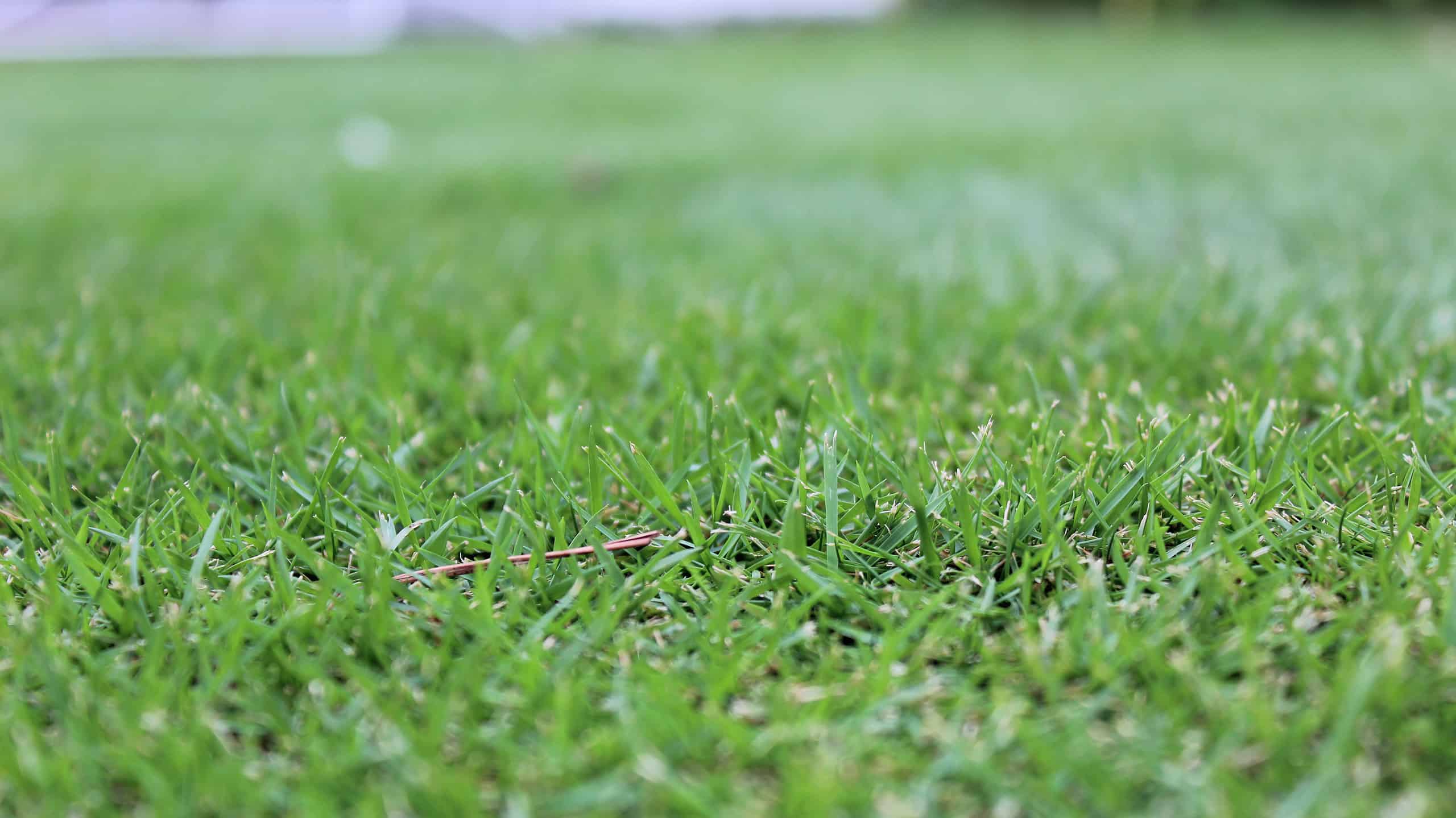Whether you’re a seasoned gardener or a newbie to the turf game, finding the perfect grass can make all the difference in creating a lush, vibrant landscape.
Georgia’s climate is unique, with hot and humid summers, and mild winters. It’s a land of sweet tea sippin’, peach pickin’, and backyard barbecues, but it also presents some challenges for maintaining a picture-perfect lawn. That’s why choosing the right grass type is crucial to ensure your outdoor oasis stands strong and green all year long.
In this article, we’ll explore the top contenders for Georgia’s best grass and delve into their unique traits, growing preferences, and maintenance needs. From the beloved Bermudagrass with its heat tolerance and rapid growth to the sturdy and shade-loving fescue varieties, we’ll uncover the secrets of each grass type and give you the knowledge to make an informed decision for your lawn.
1. Bermudagrass
Classification: Cynodon dactylon
Due to its many benefits, Bermudagrass is a common choice for Georgia lawns. Because of its high resistance to heat and drought, it thrives in Georgia’s hot and humid climate. It is an excellent choice for keeping a lush green lawn year-round because it can resist high temperatures without bleaching.
Bermudagrass also spreads quickly, covering dry places and creating a thick, lush lawn in no time. Due to its resilience, it is often used on sports fields and golf courses, both of which see heavy foot traffic.
Disadvantages of Bermudagrass
There are several drawbacks to using Bermudagrass, despite its many advantages. The aggressiveness of its growth is one major negative. Although it takes little time to become established, it can spread uncontrollably into undesirable locations such as flower beds.
It also has a low shade tolerance, which is a problem. Bermudagrass requires a lot of light to flourish and does not do well in shaded regions. Yards with a lot of shade might do better with a different kind of grass.
Maintenance and Care
A Bermudagrass lawn needs regular maintenance to look its best. Mowing it regularly will keep it looking nice and prevent it from becoming overgrown. It may need to be mowed every five to seven days during the growing season to keep it at a manageable height of around two inches.
Bermudagrass needs regular fertilization to keep growing and looking green. When applied in the spring and early summer, a balanced fertilizer encourages robust growth. It is also important to water the grass sufficiently, particularly during dry periods, to keep it drought-resistant.
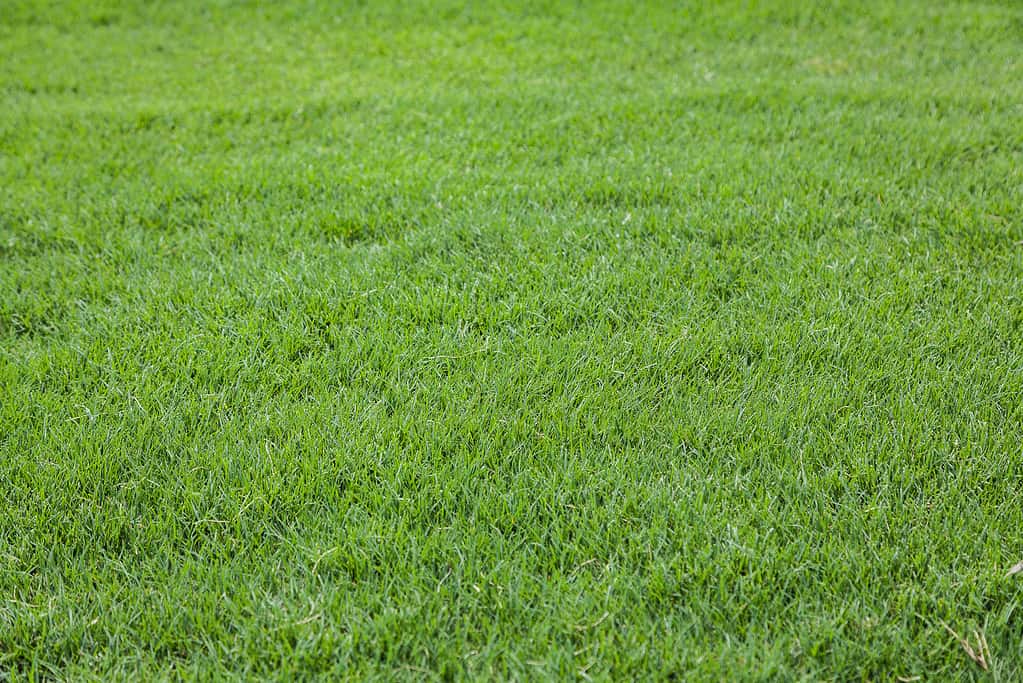
Bermudagrass is a good choice for high-traffic lawns.
©iStock.com/JPratt
2. Zoysiagrass
Classification: Zoysia spp.
For its many benefits, Zoysiagrass stands out as a great grass type for Georgia lawns. Its high resistance to heat and drought is a major benefit. While many grasses struggle in the hot, dry summers of Georgia, Zoysiagrass retains its vibrant green color and resiliency.
The slow-growing rate of Zoysiagrass is another one of its advantages. Zoysiagrass, in contrast to some other grasses, can save homeowners time and effort by reducing the frequency with which they need to mow. Its dense growth pattern helps it to smother out weeds, making chemicals and human weed management unnecessary.
Disadvantages of Zoysiagrass
Although there are many benefits of using Zoysiagrass, there are also some downsides that should be taken into account. It takes longer for this grass to become established than other types, which is a major drawback. Establishing a full, homogeneous lawn with Zoysiagrass could take more time.
It also has trouble with intense shade, which is a problem. Although it may grow in partial shade, Zoysiagrass thrives in full sun. Due to this restriction, creative landscaping solutions for the yard’s shady areas may be necessary.
Maintenance and Care
Care and maintenance are essential for keeping Zoysiagrass in good condition. Though it grows more slowly than most grasses, it still needs to be mowed frequently during the growing season so that it stays between one and two inches in height. Lawns that are properly mowed are both healthy and attractive.
The growth and color of Zoysiagrass can be maintained with regular fertilizing. Grass receives the most benefit from a balanced fertilizer application in the early summer and spring.
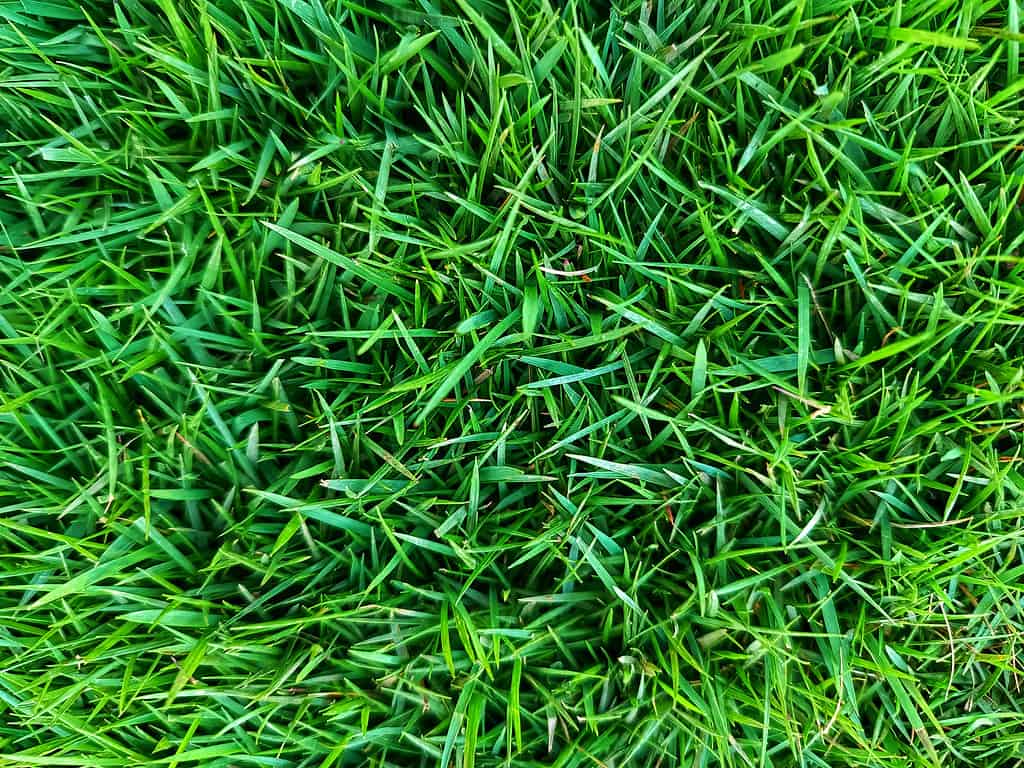
Zoysiagrass is known for its lush, green appearance and texture.
©iStock.com/HendSTD
3. Centipedegrass
Classification: Eremochloa ophiuroides
Centipedegrass proves to be an excellent choice for Georgia lawns due to its numerous advantages. One of its primary strengths is its low maintenance requirements. Unlike some other grass varieties, Centipedegrass has a slow growth rate, reducing the need for frequent mowing. This aspect can save homeowners time and effort in lawn care.
Another advantage is its natural resistance to drought conditions. Georgia’s hot summers can bring about dry spells, but Centipedegrass has a remarkable ability to withstand periods of limited water, maintaining its lush green appearance and survival.
Disadvantages of Centipedegrass
While Centipedegrass offers many benefits, it also comes with certain disadvantages to consider. One notable drawback is its sensitivity to cold temperatures. It may experience damage or brown patches during harsh winters, necessitating extra care during colder months.
Another challenge is its intolerance to heavy foot traffic and wear. Centipedegrass is best suited for lawns with light to moderate use, making it less suitable for high-traffic areas such as sports fields.
Spread Rate and Maintenance
Centipedegrass has a moderate spread rate, filling in spaces over time but not as rapidly as some other grass types. Its slower growth also means less frequent mowing, typically requiring mowing every 10 to 14 days during the growing season to maintain an optimal height of around two inches.

Centipedegrass is a slow-growing variety that is easy to manage.
©Sherry Barr Photography/Shutterstock.com
4. Tall Fescue
Classification: Festuca arundinacea
Tall Fescue is a popular grass variety that offers several benefits, making it a great choice for Georgia lawns. One of its key strengths is its adaptability to a range of climates, including the diverse conditions found in Georgia. It thrives in both cool and warm weather, maintaining its lush green appearance throughout the year.
Additionally, Tall Fescue exhibits excellent drought tolerance, an essential trait for surviving Georgia’s hot and dry summers. Even during periods of limited water availability, Tall Fescue can retain its vitality, providing homeowners with an attractive lawn despite challenging weather conditions.
Disadvantages of Tall Fescue
Despite its benefits, Tall Fescue also has some drawbacks to consider. One notable disadvantage is its lower heat tolerance compared to other grass types like Bermudagrass or Zoysiagrass. In extreme heat, Tall Fescue may experience stress and require extra care to stay healthy.
Another challenge is its susceptibility to certain diseases, particularly during extended periods of wet weather. Proper lawn care practices, such as avoiding overwatering and providing adequate drainage, can help mitigate these issues.
Spread Rate and Maintenance
Tall Fescue has a moderate spread rate, filling in bare spots over time without becoming overly aggressive like some other grasses. Its slower growth also means reduced maintenance needs, typically requiring mowing every seven to 10 days during the growing season to maintain an optimal height of about two to three inches.
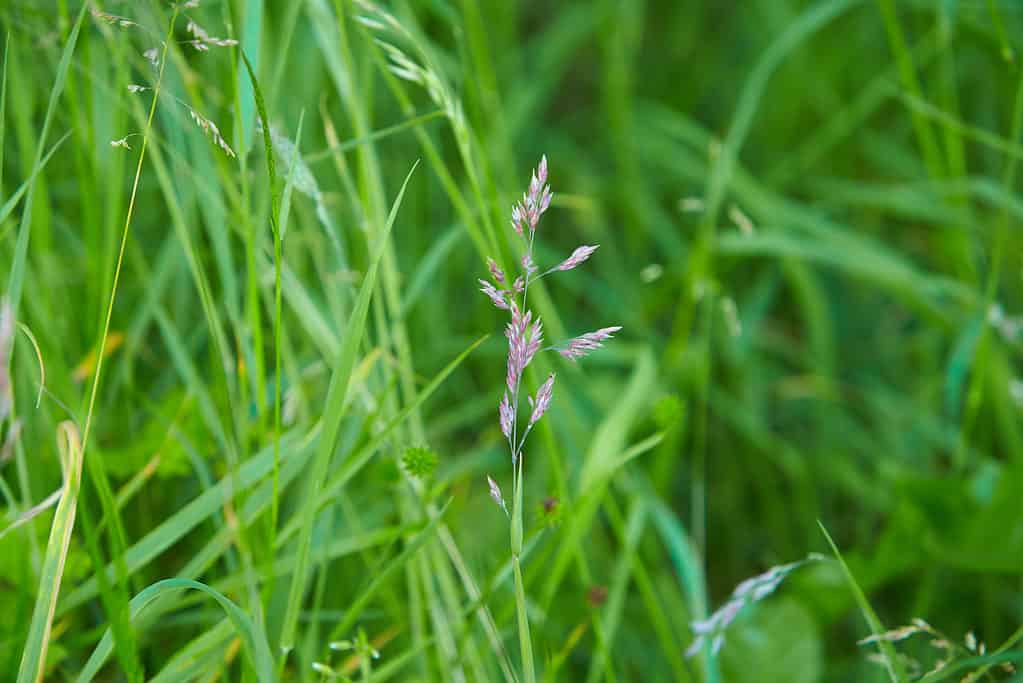
Tall Fescue is a great choice for lawns that tend to get brown spots.
©iStock.com/Irina Pislari
5. Bahiagrass
Classification: Paspalum notatum
Bahiagrass is a commendable grass choice for Georgia lawns, offering several advantages that suit the state’s climate and soil conditions. One of its main strengths is its exceptional drought tolerance. Georgia’s summers can be scorching, but Bahiagrass can withstand extended periods of heat and limited water, retaining its green color and vitality even in challenging conditions.
Another benefit is its ability to thrive in poor soil types, including sandy or infertile soils commonly found in Georgia. Bahiagrass’s adaptability makes it a valuable option for homeowners seeking an attractive lawn without extensive soil amendments.
Disadvantages of Bahiagrass
While Bahiagrass boasts many benefits, it also comes with certain drawbacks to consider. One notable disadvantage is its coarse texture compared to other grass varieties. Some homeowners may prefer a finer-textured lawn, which can influence the overall aesthetic appeal.
Bahiagrass’s slower establishment rate may require patience during lawn establishment or renovation projects. It can take longer to achieve a full and uniform lawn, requiring proper care and maintenance during the establishment phase.
Spread Rate and Maintenance
Bahiagrass has a moderate to fast spread rate, gradually filling in bare spots and creating a dense turf over time. Once established, it requires minimal maintenance. Regular mowing is necessary during the growing season, with mowing intervals of approximately 10 to 14 days to maintain an optimal height of about three to four inches.
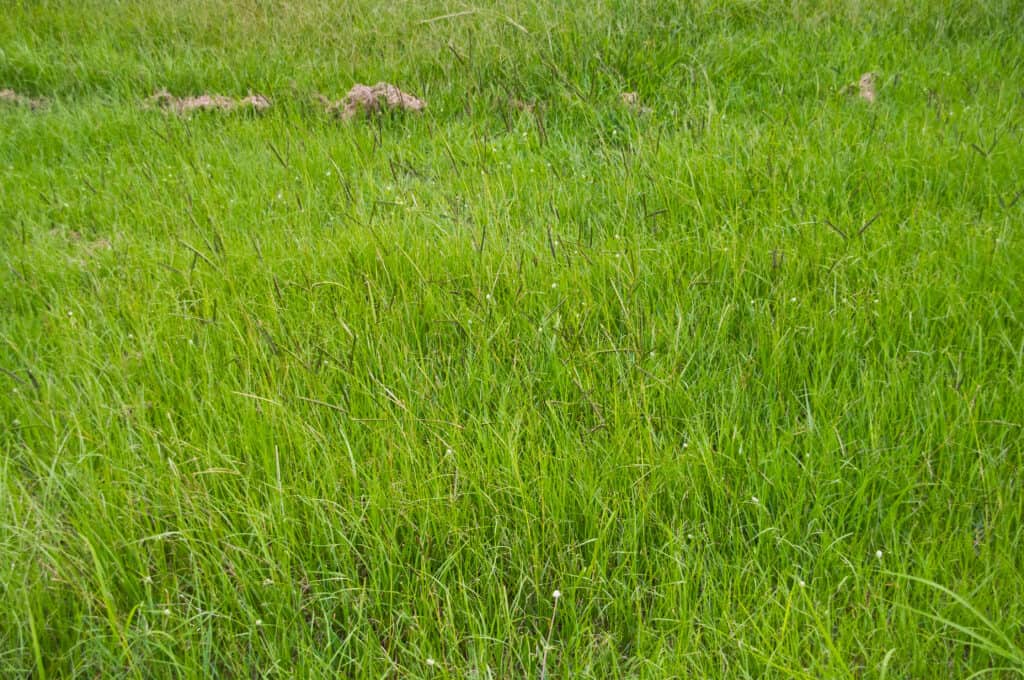
Bahiagrass is both fast-growing and yet easy to maintain in the long term.
©John Robert McPherson, CC BY-SA 4.0, via Wikimedia Commons – Original / License
6. St. Augustinegrass
Classification: Stenotaphrum secundatum
St. Augustinegrass is a highly suitable grass variety for Georgia lawns, offering several benefits that cater to the state’s climate and landscape. One of its main strengths lies in its outstanding heat tolerance. Georgia’s hot and humid summers can be challenging for many grass types, but St. Augustinegrass thrives in these conditions, retaining its lush green appearance even in high temperatures.
Just as well, St. Augustinegrass forms a thick, dense turf, which helps choke out weeds and prevents soil erosion, making it an ideal choice for erosion-prone areas or lawns with heavy foot traffic.
Disadvantages of St. Augustine grass
While St. Augustine grass offers numerous benefits, it also has some drawbacks to consider. One notable disadvantage is its moderate shade intolerance. St. Augustine grass prefers full sunlight and may struggle to grow in heavily shaded areas, requiring alternative grass options or thoughtful landscaping for such spots.
Another challenge is its susceptibility to certain diseases, particularly during extended periods of wet weather. Proper lawn care practices, including proper watering and good drainage, can help reduce the risk of disease issues.
Spread Rate and Maintenance
St. Augustine grass has a moderate spread rate, gradually filling in bare areas and creating a dense turf over time. However, its growth rate is not as rapid as Bermuda or Zoysiagrass. Regular maintenance is necessary to keep St. Augustine grass healthy and attractive, including mowing every seven to 10 days during the growing season to maintain an optimal height of about three to four inches.
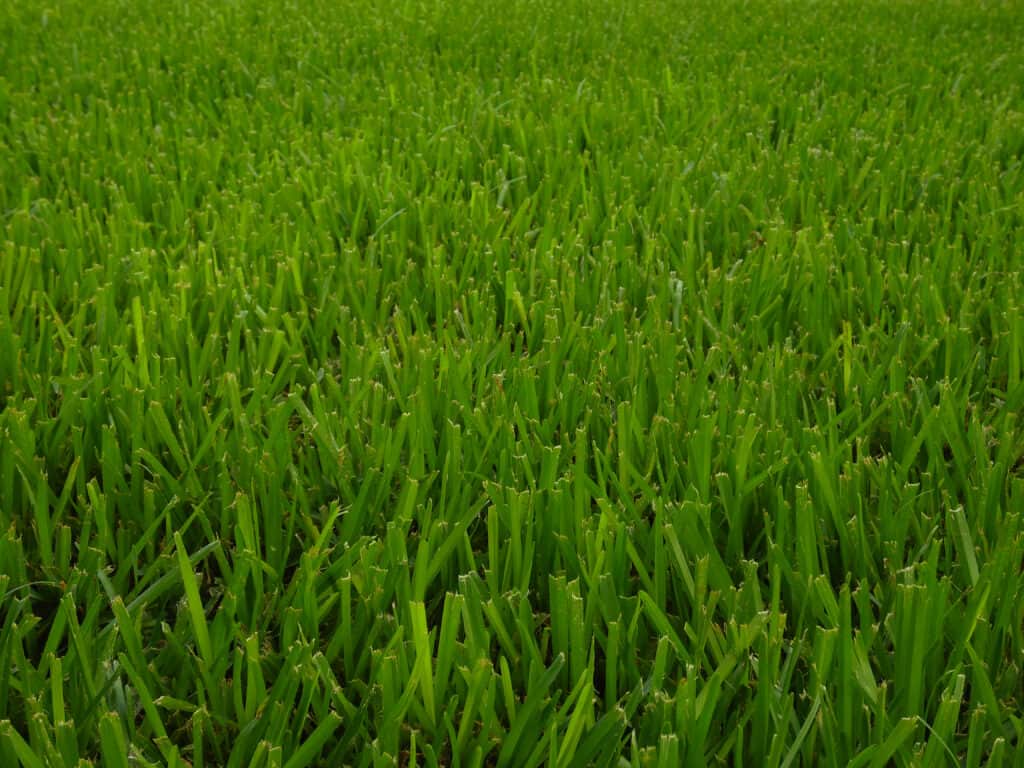
St. Augustine grass is great for tolerating harsh Georgia summers.
©Xeres Zales/Shutterstock.com
7. Kentucky Bluegrass
Classification: Poa pratensis
Kentucky Bluegrass is another exceptional grass variety for Georgia lawns. This type of grass offers several advantages that make it well-suited to the state’s climate and landscape. One of its primary strengths is its lush, fine-textured appearance, creating a visually appealing and elegant lawn that enhances the overall curb appeal of any property.
Another advantage of Kentucky Bluegrass is its excellent cold tolerance. While Georgia’s winters are generally milder, this grass variety can withstand occasional frost and cold snaps, ensuring a green lawn throughout the year.
Disadvantages of Kentucky Bluegrass
Despite its benefits, Kentucky Bluegrass also has some considerations. One notable drawback is its moderate heat tolerance. During the hot Georgia summers, it may experience stress and require additional irrigation to maintain its appearance.
Another challenge is its slower spread rate compared to some other grasses like Bermuda or Zoysiagrass. Proper lawn care and reseeding may be necessary to establish a full and uniform lawn.
Spread Rate and Maintenance
Kentucky Bluegrass has a moderate spread rate, filling in bare spots over time. Regular maintenance is required to keep it healthy and visually appealing, including mowing every five to seven days during the growing season to maintain an optimal height of about three inches.
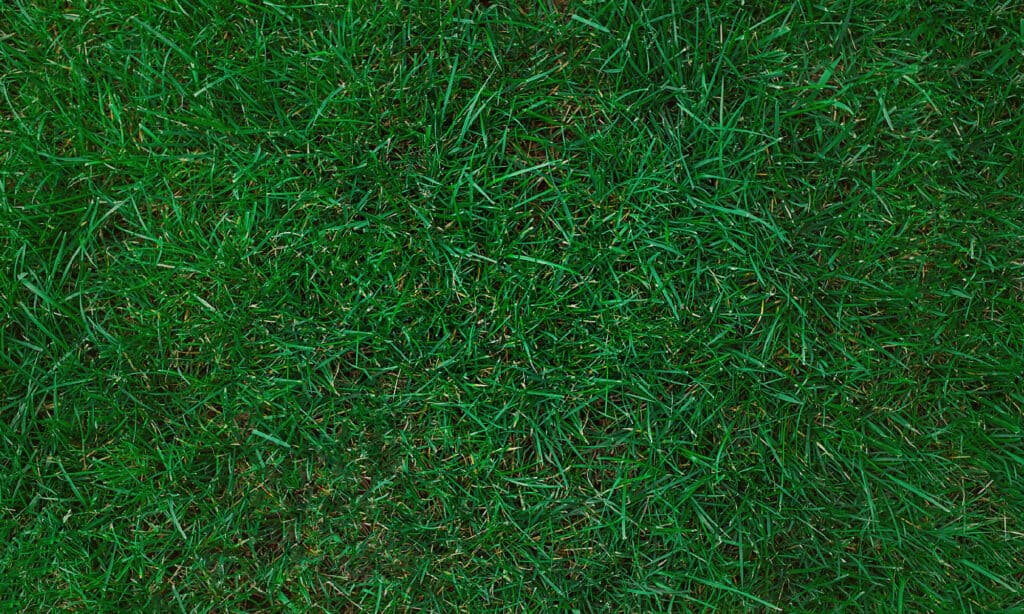
Kentucky Bluegrass is known for its rich, greenish-blue hue.
©iStock.com/KacieBuccieri
8. Ryegrass
Classification: Lolium spp.
Ryegrass proves to be a fantastic grass option for Georgia lawns, offering several advantages that suit the state’s climate and lawn needs. One of its main strengths is its fast germination and establishment rate, making it an ideal choice for overseeding warm-season lawns during the cooler months. Ryegrass provides an attractive green cover during the winter, maintaining a lush lawn appearance even in colder seasons.
Moreover, Ryegrass has a fine texture and vibrant color, creating a visually appealing lawn that enhances the overall aesthetics of any property. Its adaptability to a variety of soil types, including sandy and clay soils commonly found in Georgia, makes it a practical option for homeowners.
Disadvantages of Ryegrass
While Ryegrass offers numerous benefits, it also comes with some considerations. One notable drawback is its lower heat tolerance compared to warm-season grasses like Bermuda or Zoysiagrass. As temperatures rise during Georgia’s summers, Ryegrass may experience stress and require proper irrigation to stay healthy.
Another challenge is its susceptibility to disease, particularly during wet and cool weather. Adequate lawn care practices, such as proper watering and well-drained soil, can help mitigate these issues.
Spread Rate and Maintenance
Ryegrass has a rapid spread rate, quickly filling in bare areas and providing an even turf. During its growing season in fall and winter, it requires regular maintenance, including mowing every seven to 10 days to maintain an optimal height of about two inches.
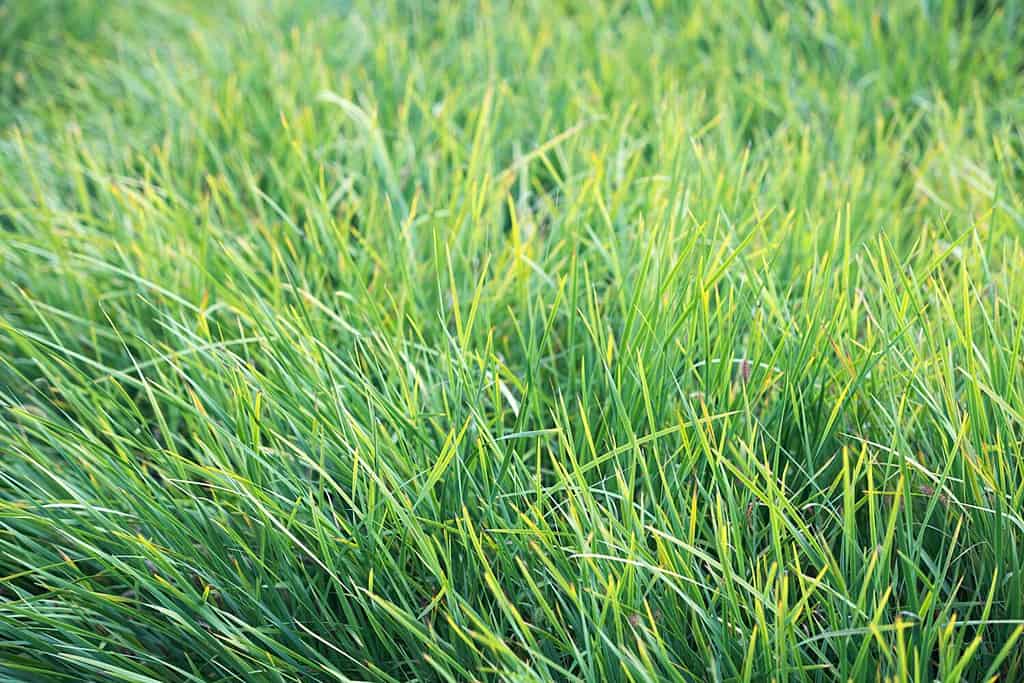
Ryegrass can have a more wild appearance but can be quite suitable for more naturalistic yards and gardens.
©dajingjing/Shutterstock.com
9. Buffalo Grass
Classification: Buchloe dactyloides
Buffalo Grass stands out as an excellent grass variety for Georgia lawns. One of its key strengths lies in its exceptional heat and drought tolerance. Georgia’s hot and dry summers can be challenging for many grass types, but Buffalo Grass thrives in these conditions, maintaining its lush green color and resilience even in arid weather.
Moreover, Buffalo Grass requires minimal water, making it an eco-friendly option that can help conserve water resources. Its deep root system allows it to access moisture deep within the soil, reducing the need for frequent irrigation.
Disadvantages of Buffalo Grass
While Buffalo Grass offers many benefits, it also has some considerations. One notable drawback is its slower growth rate and establishment time compared to other grasses. It may take longer to establish a full and uniform lawn, requiring patience during the initial growth phase.
Another challenge is its intolerance to heavy foot traffic. Buffalo Grass is best suited for lawns with light to moderate use, making it less suitable for high-traffic areas such as sports fields.
Spread Rate and Maintenance
Buffalo Grass has a slow spread rate, filling in bare spots gradually over time. Its slow growth also means reduced maintenance needs, typically requiring mowing every 10 to 14 days during the growing season to maintain an optimal height of about two to four inches.
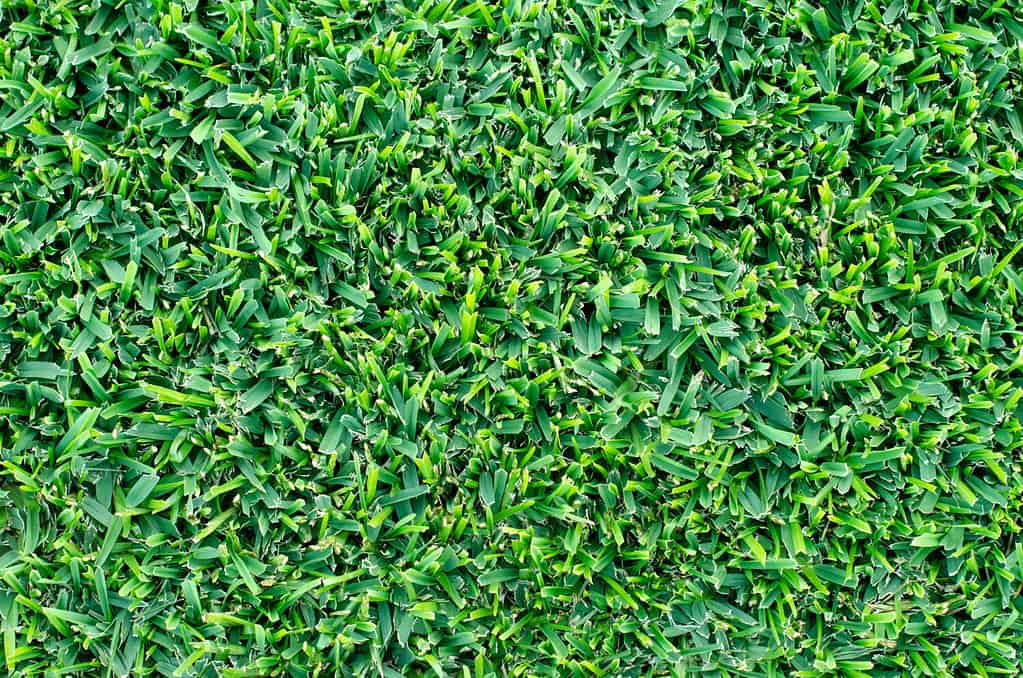
Buffalo Grass is more suitable as an ornamental grass, rather than a grass that gets a lot of foot traffic.
©doublelee/Shutterstock.com
Summary of the Best Grass Types that Thrive in Georgia
| # | Grass | Classification |
|---|---|---|
| 1 | Bermudagrass | Cynodon dactylon |
| 2 | Zoysiagrass | Zoysia spp. |
| 3 | Centipedegrass | Eremochloa ophiuroides |
| 4 | Tall Fescue | Festuca arundinacea |
| 5 | Bahiagrass | Paspalum notatum |
| 6 | St. Augustinegrass | Stenotaphrum secundatum |
| 7 | Kentucky Bluegrass | Poa pratensis |
| 8 | Ryegrass | Lolium spp. |
| 9 | Buffalo Grass | Buchloe dactyloides |
Thank you for reading! Have some feedback for us? Contact the AZ Animals editorial team.

